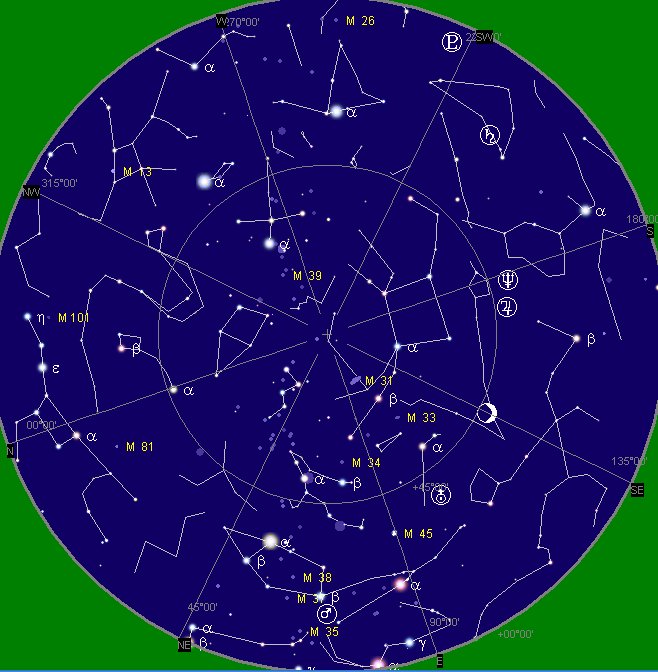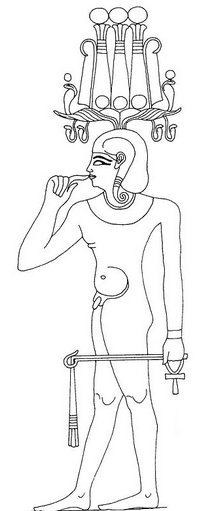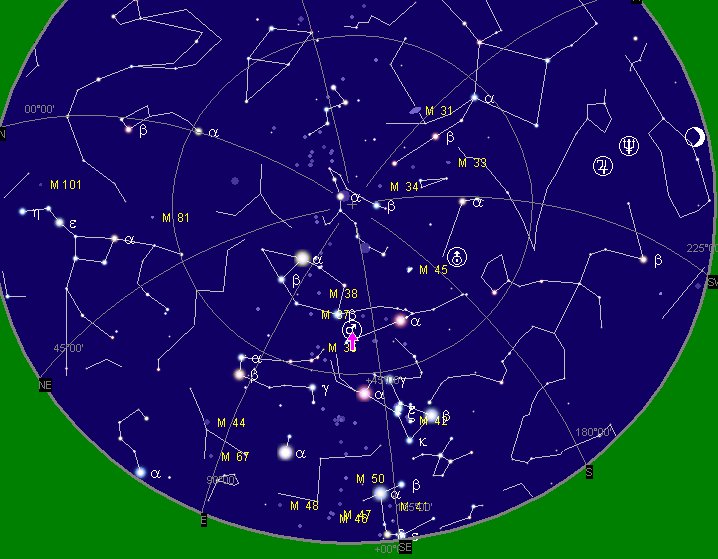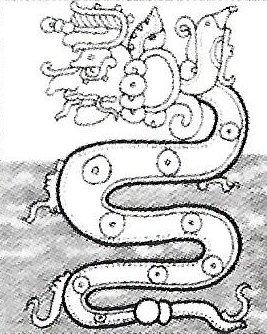121 → Beltane. Now we should go back in time, from the place where Mars was visible in the evening of November 6 (310) AD 2022 to the place a month earlier, viz. to October 7 (310 - 30 = 280 → 40 weeks):
... Anciently numbers were never chosen haphazardly, it was a serious business, and close to Mars in the night of November 6 AD 2022 we can find 121 Tauri (→ Beltane) ...
We should then count to the place 30 right ascension days (glyphs) earlier, in order to possibly find the place where Mars might have been visible in the evening of October 7 AD 2022. There are 31 days in October and therefore day 7 in October will be 30 days earlier than November 6. But first we should with interest notice that according to the Hindu the Head of the Stag corresponded to the 'missing head' of the Hunter Orion: ... Al Maisān, the title of γ Geminorum, by some error of Firuzabadi was applied to this star as Meissa, and is now common for it. Al Sufi called it Al Tahāyī; but Al Ferghani and Al Tizini knew it as Rās al Jauzah, the Head of the Jauzah, which it marks. The original Arabic name, Al Hak'ah, a White Spot, was from the added faint light of the smaller φ╣and φ▓ in the background, and has descended to us as Heka and Hika. These three stars were another of the Athāfiyy [tripods used for cooking] of the Arabs; and everywhere in early astrology were thought, like all similar groups, to be of unfortunate influence in human affairs. They constituted the Euphratean lunar station Mas-tab-ba-tur-tur, the Little Twins, a title also found for γ and η Geminorum; and individually were important stars among the Babylonians, rising to them with the sun at the summer solstice, and, with α and γ, were known as Kakkab Sar, the Constellation of the King ... ... The Heka triplet is where we otherwise would have expected to see a bright single star representing Orion's head (when looking from a location in the northern hemisphere) ... λ and the two stars phi furnish an easy refutation of the popular error as to the apparent magnitude of the moon's disc, Colas writing of this in the Celestial Handbook of 1892: In looking at this triangle nobody would think that the moon could be inserted in it; but as the distance from λ to φ╣ is 27', and the distance from φ╣ to φ▓ is 33', it is a positive fact; the moon's mean apparent diameter being 31' 7''. This illusion, prevalent in all ages, has attracted the attention of many great men; Ptolemy, Roger Bacon, Kepler, and others having treated of it. The lunar disc, seen by the naked eye of an uninstructed observer, appears, as it is frequently expressed 'about the size of a dinner-plate', but should be seen as only equal to a peppercorn ...
And then, for the place of Mars in the evening of October 7 AD 2022, we have to change the time of observation from 21h to 03h:
Thus the dotted line in the diagram above seems to correspond to when we have to shift the time of observation from 21h to 03h.
As observed in the autumn nights the path of the planet Mars was not straight at all, which possibly might have inspired the idea of a Water Serpent moving upwards, like the Dragon of the Waters, Imix, the first of the Mayan day signs: ... His undulating climbing corresponded to the undulating text lines on a rongorongo tablet, rising from bottom up with the even lines carrying its glyphs oriented upside down. He was like the first Mayan day sign Imix ...:
|
||||||||||||||||||||||||||||||||||||||||||||||||||||||||||||||||||||||||||||||||||||||||||||||||||||||||||||||||||||||















